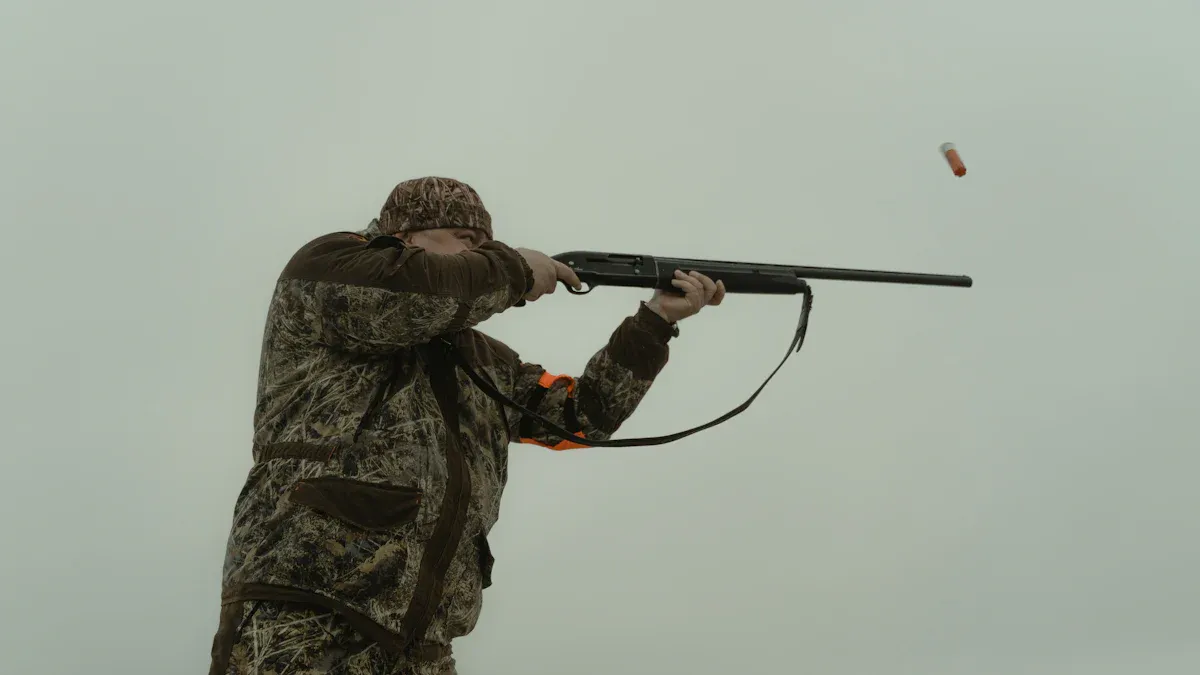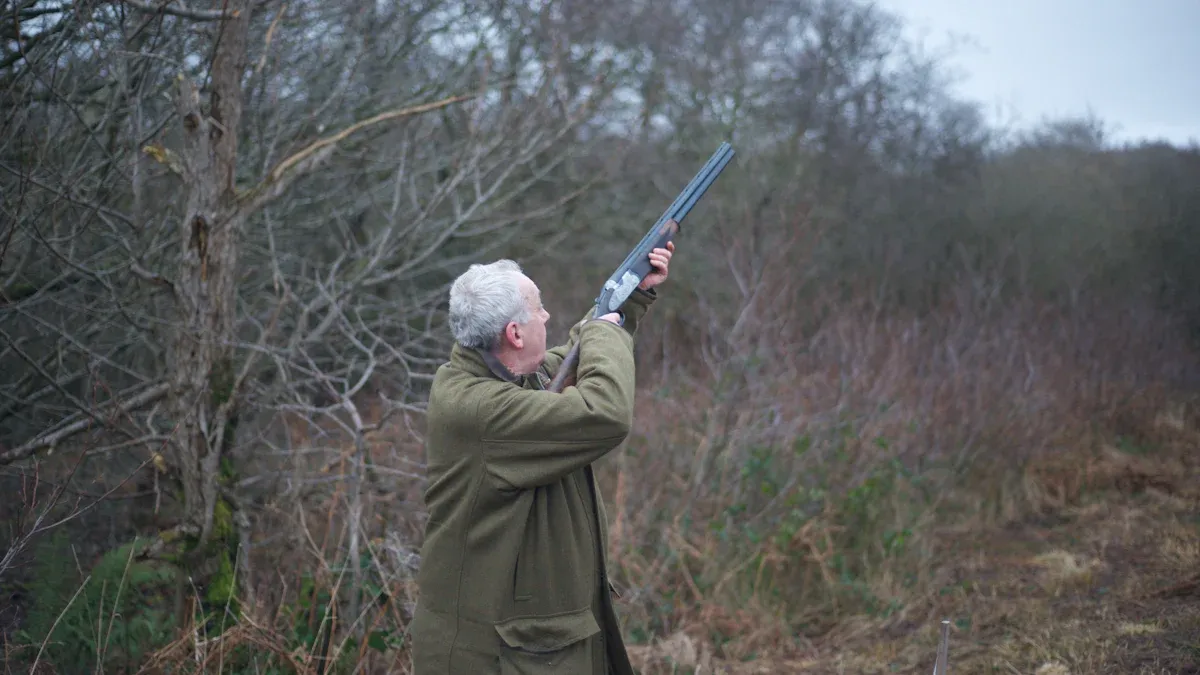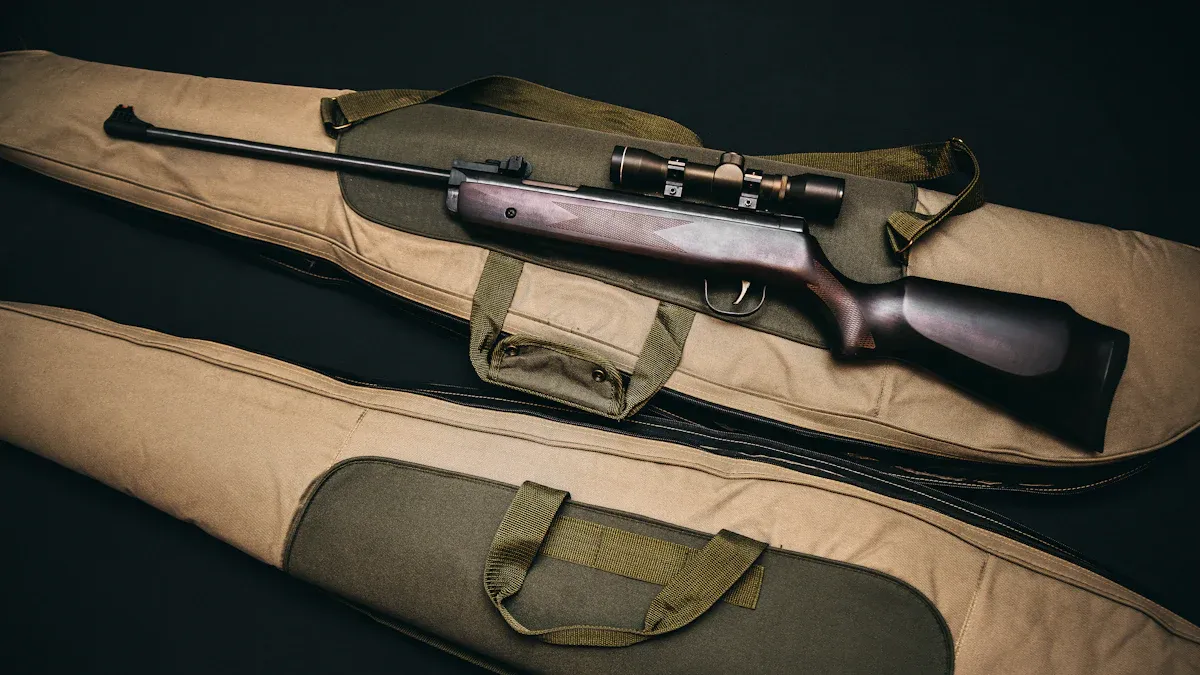
When it comes to stability and firearm security, a hunting shooting stick 5 legged stick by outer clamp locking offers unmatched advantages. Its unique design ensures your firearm stays firmly in place, even in uneven or windy conditions. You’ll notice the difference when navigating challenging terrains. However, this design may feel heavier and costlier compared to simpler options. For hunters who value precision and safety, this innovative tool can transform how you approach your next hunt.
Key Takeaways
- A five-legged shooting stick is very steady. It works well on rough or windy ground.
- The clamp locks your gun fast. This makes it safer and helps you aim better.
- You can change the leg height and angle easily. This helps you shoot more accurately in different positions.
- Buying a five-legged shooting stick can save money over time. It lasts long and works well.
- Cleaning and checking your shooting stick often keeps it working great for years.
Stability and Support

How Five Legs Enhance Stability
A five-legged design provides unmatched stability for your firearm. Each leg acts as an anchor, distributing weight evenly across multiple points. This reduces the chances of tipping or wobbling, even when you shift your position. Unlike traditional bipods or tripods, the additional legs create a broader base, which significantly improves balance.
Tip: When using a hunting shooting stick 5 legged stick by outer clamp locking, ensure all legs are firmly planted on the ground for maximum stability.
The outer clamp locking system further enhances stability by securely holding your firearm in place. This feature minimizes movement, allowing you to focus entirely on your target. Whether you’re aiming at a distant deer or tracking a moving animal, the five-legged design ensures your shot remains steady.
Comparing Five-Legged Sticks to Bipods and Tripods
When comparing five-legged shooting sticks to bipods and tripods, the differences in stability become clear. Bipods, with only two legs, often struggle to maintain balance on uneven surfaces. Tripods perform better, but they still lack the extra support provided by a five-legged design.
| Feature | Bipods | Tripods | Five-Legged Sticks |
|---|---|---|---|
| Number of Legs | 2 | 3 | 5 |
| Stability on Uneven Ground | Low | Moderate | High |
| Wind Resistance | Low | Moderate | High |
If you prioritize stability, especially in challenging environments, a five-legged stick outperforms the other options. Its design ensures your firearm remains steady, even when external factors like wind or uneven terrain come into play.
Performance in Uneven Terrain and Windy Conditions
Hunting often takes you to rugged landscapes where the ground is far from level. A hunting shooting stick 5 legged stick by outer clamp locking excels in these conditions. The five legs adapt to uneven surfaces, providing a stable platform regardless of the terrain. You can adjust the legs individually to match the ground’s contours, ensuring all points make firm contact.
Windy conditions pose another challenge for hunters. Lightweight bipods and tripods may sway or even topple over in strong gusts. In contrast, the five-legged design offers superior wind resistance. The additional legs create a sturdier base, reducing the impact of wind on your aim.
Note: Always test your shooting stick in various conditions before heading out. Familiarity with its setup and performance can make a significant difference in the field.
Ease of Use and Adjustability
Advantages of Outer Clamp Locking Systems
Outer clamp locking systems simplify the process of securing your firearm. These systems allow you to lock your firearm in place quickly and securely. You don’t need to fumble with complicated mechanisms or tools. This feature ensures that your firearm stays steady, even during sudden movements or adjustments.
The outer clamp locking system also provides a firm grip on your firearm without causing damage. Unlike older designs that might scratch or loosen over time, this system ensures durability and reliability. You can trust it to hold your firearm in place during long hunting sessions.
Tip: Practice using the outer clamp locking system before heading out. Familiarity with its operation can save you time and effort in the field.
Adjusting Height and Angles: Five-Legged vs. Other Designs
Adjusting the height and angle of a five-legged shooting stick is straightforward. Each leg can be adjusted independently, giving you more control over the setup. This flexibility allows you to adapt to various shooting positions, whether you’re standing, kneeling, or lying prone.
In comparison, bipods and tripods offer limited adjustability. Bipods often lack the range of motion needed for uneven terrain. Tripods perform better but still fall short of the versatility provided by a five-legged design. With a five-legged stick, you can fine-tune the height and angle to match your shooting style and the environment.
| Feature | Bipods | Tripods | Five-Legged Sticks |
|---|---|---|---|
| Height Adjustability | Limited | Moderate | High |
| Angle Adjustability | Low | Moderate | High |
| Terrain Adaptability | Low | Moderate | High |
This level of customization makes the five-legged design ideal for hunters who need precision and adaptability.
Field Setup: Practicality of Five-Legged Sticks
Setting up a five-legged shooting stick in the field might seem challenging at first. However, with a bit of practice, you’ll find it surprisingly practical. The legs fold out smoothly, and the outer clamp locking system ensures a quick and secure setup. You can have your shooting stick ready in moments, even in high-pressure situations.
The five-legged design also excels in stability during setup. Unlike bipods or tripods, which may wobble on uneven ground, the additional legs provide a solid foundation. This stability allows you to focus on your target without worrying about your equipment.
Note: Always check the ground before setting up your shooting stick. Clearing debris or leveling the surface can improve stability and performance.
Durability and Build Quality
Materials Used in Five-Legged Shooting Sticks
The materials used in five-legged shooting sticks play a crucial role in their durability. Most high-quality models use aluminum or carbon fiber for the legs. Aluminum offers excellent strength and resists bending under pressure. Carbon fiber, on the other hand, is lightweight yet incredibly strong, making it ideal for long hunting trips.
Some designs also incorporate reinforced plastic or rubber components. These materials add flexibility and improve grip on uneven surfaces. The outer clamp locking system often uses stainless steel or heavy-duty plastic to ensure a secure hold on your firearm. When choosing a shooting stick, look for materials that balance strength, weight, and resistance to wear.
Tip: Check the product specifications to confirm the materials used. This ensures you invest in a stick that meets your durability needs.
Longevity and Resistance to Wear
A five-legged shooting stick is built to last, provided you choose a well-made model. The materials used in its construction determine how well it resists wear and tear. Aluminum and carbon fiber are highly resistant to corrosion, making them suitable for outdoor use. Rubberized feet and clamps also help reduce wear by absorbing impact and preventing scratches.
Regular maintenance can extend the lifespan of your shooting stick. Wipe it down after each use to remove dirt and moisture. Inspect the clamps and joints for signs of wear. By taking these steps, you can ensure your shooting stick remains reliable for years.
Durability in Harsh Outdoor Conditions
Hunting often exposes your gear to harsh conditions. A five-legged shooting stick excels in these environments. Its sturdy materials withstand extreme temperatures, rain, and even snow. The wide base and durable legs provide stability on rocky or muddy terrain.
Note: Always test your shooting stick in different conditions before your trip. This helps you understand its performance and ensures it’s ready for the challenges ahead.
Portability and Weight

Weight Considerations of Five-Legged Designs
Five-legged shooting sticks are heavier than bipods and tripods. The additional legs and sturdy materials, like aluminum or carbon fiber, contribute to this extra weight. While this might seem like a drawback, the added weight enhances stability, especially in windy or uneven conditions. You’ll notice that the heavier design keeps your firearm steady, even during long hunting sessions.
When choosing a five-legged stick, consider your hunting style. If you often hike long distances, a lightweight carbon fiber model might suit you better. On the other hand, if you prioritize stability over portability, aluminum designs offer excellent durability and support.
Tip: Check the weight specifications before purchasing. A balance between weight and stability ensures comfort during extended use.
Folding and Transporting Five-Legged Sticks
Transporting a five-legged shooting stick might seem challenging, but modern designs make it manageable. Most models feature foldable legs that collapse into a compact size. This makes it easier to carry the stick in your backpack or attach it to your gear.
Some sticks also include carrying cases or straps for added convenience. These features reduce the hassle of transporting the stick, even in rugged terrains. You can quickly unfold the legs when needed, ensuring you’re always ready for action.
Note: Practice folding and unfolding your stick at home. Familiarity with the process saves time in the field.
Balancing Portability with Stability
Balancing portability and stability is crucial when selecting a shooting stick. A five-legged design offers unmatched stability, but it requires careful consideration of its portability. Lightweight materials like carbon fiber improve portability without compromising strength. Adjustable legs and compact folding mechanisms further enhance ease of transport.
You should evaluate your hunting needs before deciding. If you hunt in challenging terrains, prioritize stability. For hunters who travel long distances, a lighter, more portable model might be the better choice.
Reminder: Always test the stick’s portability and stability before your trip. This ensures it meets your specific requirements.
Cost vs. Value
Price Range of Five-Legged Shooting Sticks
Five-legged shooting sticks often come with a higher price tag compared to bipods or tripods. Their advanced design, durable materials, and added features contribute to the cost. On average, you can expect to pay anywhere from $100 to $300 for a high-quality model. Premium options with carbon fiber construction or advanced locking systems may cost even more.
While the initial investment might seem steep, these sticks offer features that justify the price. The outer clamp locking system, for example, ensures your firearm stays secure during use. This level of reliability can make a significant difference during critical moments in the field.
Tip: Compare prices across different brands and retailers. Sales or discounts can help you find a high-quality stick within your budget.
Long-Term Value: Are They Worth the Investment?
A five-legged shooting stick is more than just a tool; it’s an investment in your hunting experience. Its durability ensures it lasts for years, even with regular use in harsh conditions. The stability it provides can improve your accuracy, leading to more successful hunts.
You’ll also save money in the long run by avoiding frequent replacements. Cheaper alternatives may wear out quickly, especially in challenging terrains. A well-made five-legged stick offers consistent performance, making it a cost-effective choice over time.
Comparing Costs with Other Shooting Stick Designs
When comparing costs, five-legged shooting sticks are pricier than bipods and tripods. Bipods are the most affordable, typically ranging from $20 to $50. Tripods fall in the mid-range, costing between $50 and $150. However, these designs lack the stability and versatility of a five-legged stick.
| Feature | Bipods ($20-$50) | Tripods ($50-$150) | Five-Legged Sticks ($100-$300) |
|---|---|---|---|
| Stability | Low | Moderate | High |
| Durability | Moderate | Moderate | High |
| Long-Term Value | Low | Moderate | High |
If you prioritize stability and durability, the higher cost of a five-legged stick is well worth it. It’s a tool designed for serious hunters who demand the best performance in the field.
A hunting shooting stick 5 legged stick by outer clamp locking offers unmatched stability and firearm security. Its design makes it ideal for uneven or windy terrains, where precision matters most. While it may feel heavier and costlier than other options, the benefits often outweigh these drawbacks. If you value accuracy and reliability, this tool can transform your hunting experience. You’ll find it especially useful in challenging environments where other designs might fail to perform.
FAQ
1. Why should you choose a five-legged shooting stick over a tripod or bipod?
A five-legged shooting stick offers superior stability. Its design distributes weight across more points, reducing wobbling. This makes it ideal for uneven terrain or windy conditions. If you prioritize accuracy and firearm security, this design outperforms bipods and tripods.
2. Are five-legged shooting sticks difficult to carry?
Modern five-legged shooting sticks feature foldable designs. Many models include lightweight materials like carbon fiber, making them easier to transport. Some even come with carrying straps or cases. You can balance portability and stability by choosing the right model for your needs.
3. How do you maintain a five-legged shooting stick?
Wipe the stick after each use to remove dirt and moisture. Inspect clamps and joints for wear. Store it in a dry place to prevent corrosion. Regular maintenance ensures durability and reliable performance during your hunts.
4. Can beginners use a five-legged shooting stick?
Yes, beginners can use a five-legged shooting stick. Its adjustable legs and outer clamp locking system make setup straightforward. Practice at home to familiarize yourself with its features. This preparation helps you use it effectively in the field.
5. What is the lifespan of a five-legged shooting stick?
The lifespan depends on the materials and maintenance. High-quality models made from aluminum or carbon fiber can last for years. Regular cleaning and proper storage extend their durability, ensuring they remain reliable for multiple hunting seasons.
Post time: May-08-2025

